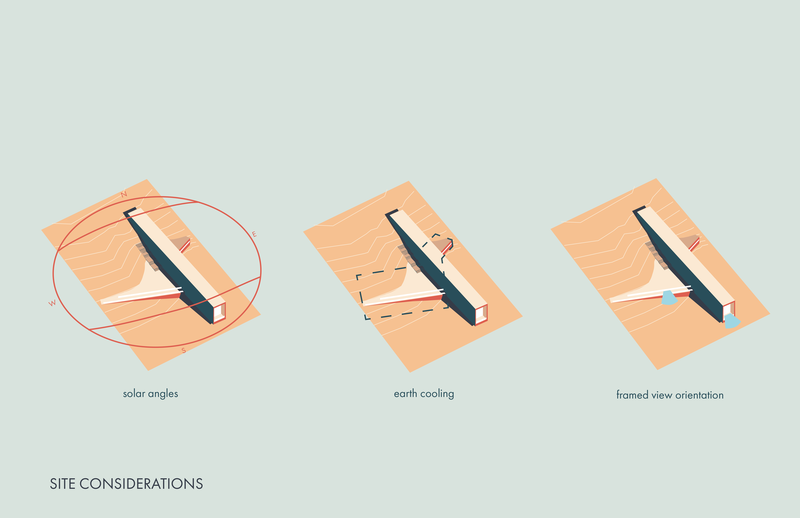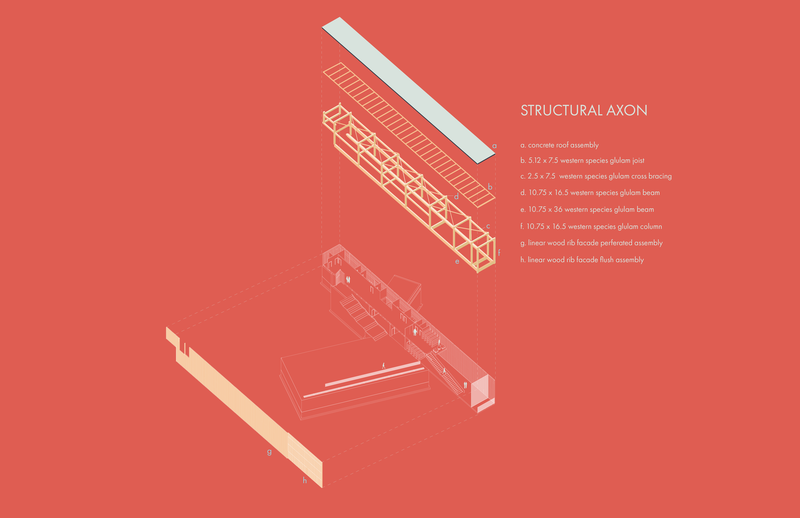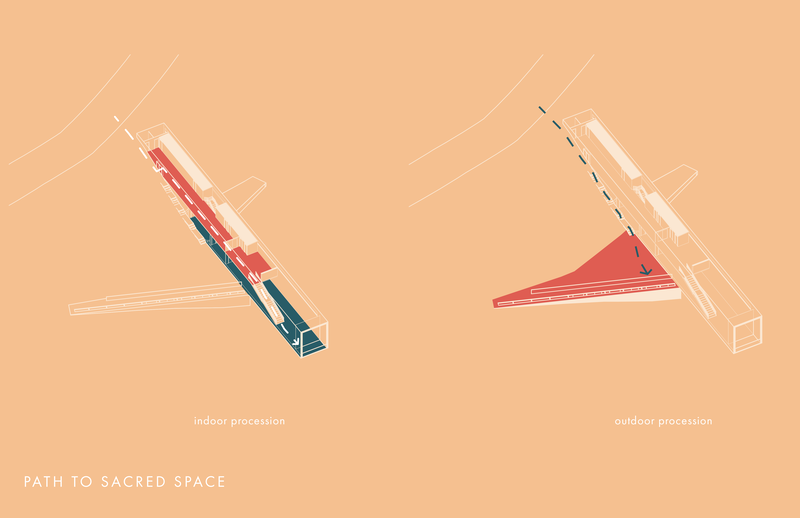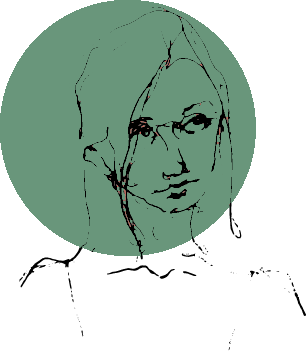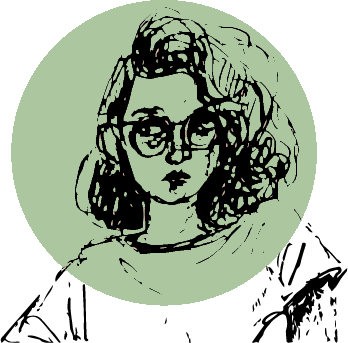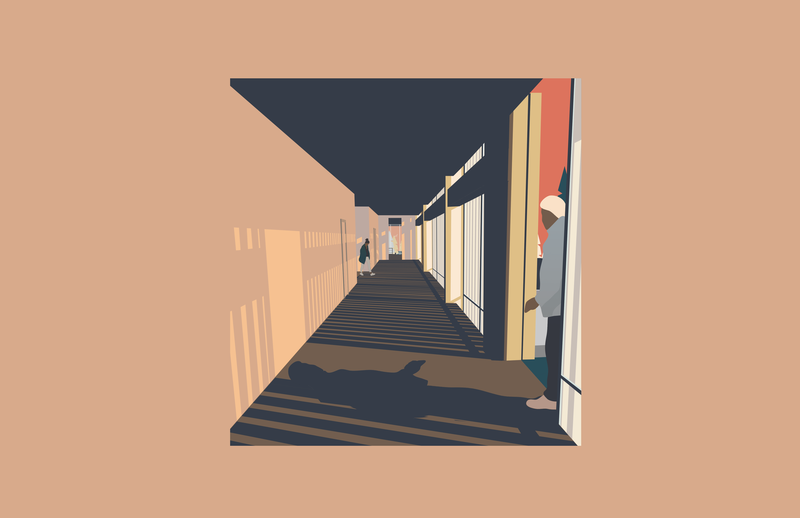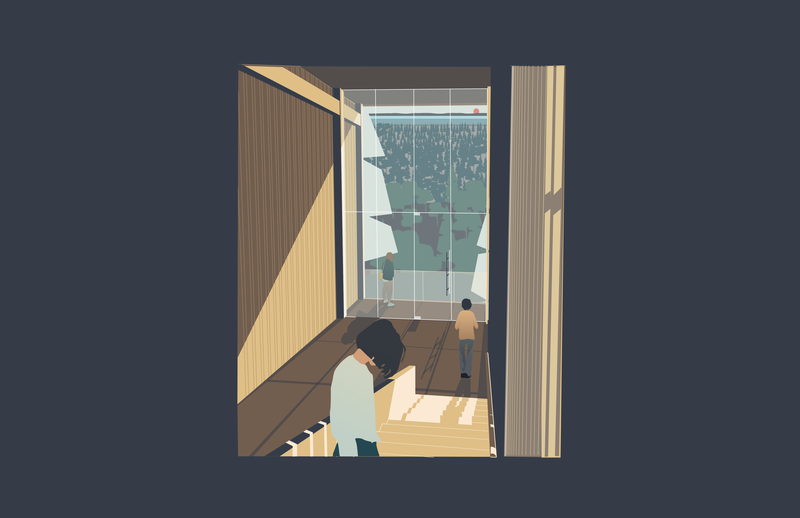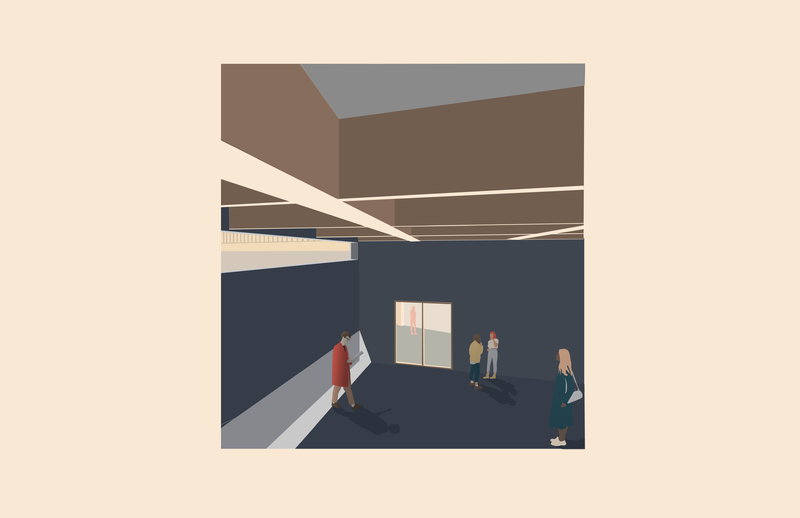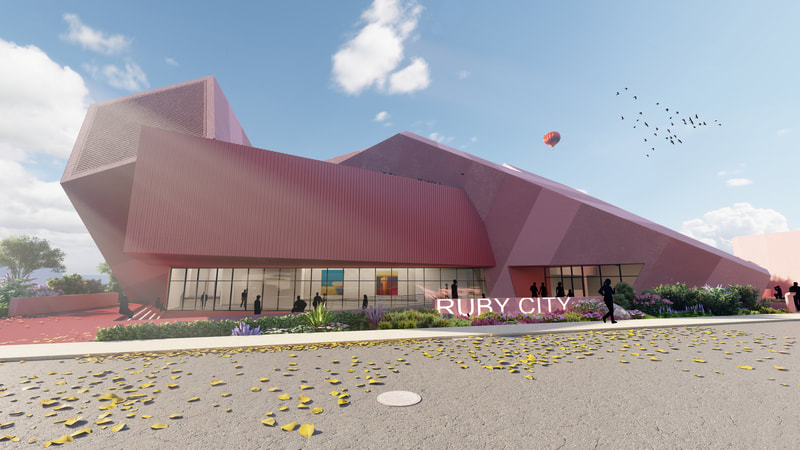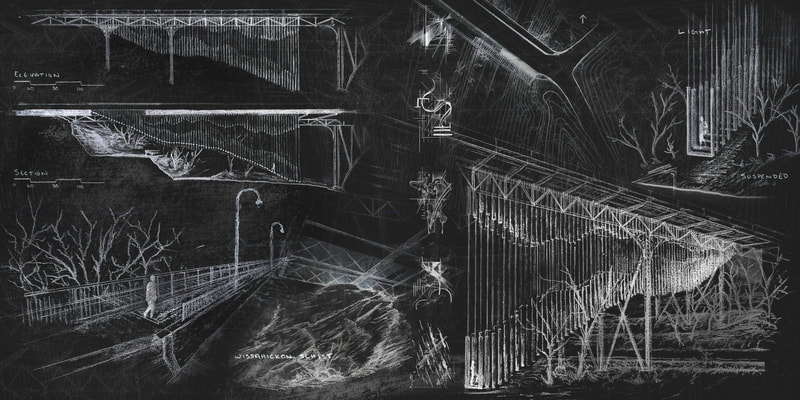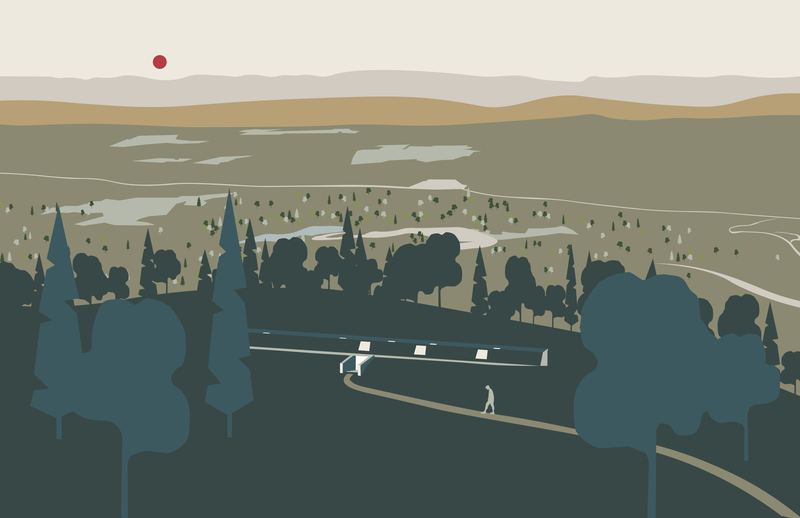|
|
Sacred Spacefrom Design 8 Architecture Studio with Prof. James McKenna
This Sacred Space is a re-imagination of what a spiritual building can be based on a case study of the existing Jesuit Community Center on the Fairfield University Campus. The new design is secular and focuses on the sacred elements such as procession, light and darkness, and the connection to nature to build a sense of spirituality without conforming to a specific denomination. Residing atop a hill, the building distinguishes space through a leveled hierarchy with the processional program cantilevering over the hill and the more secondary and view restricted program nestled underneath.
Programmatically the spaces are organized in orientation based on the solar angles and the lighting conditions they provide. The business-related spaces receive the morning sun and the more contemplative spaces receive the colored and emotional setting sun. The space seeks to create solemn and reflective architecture through a processional journey through light, forming a contemplative relationship in the absence of light and a guided reveal of a framed view |
|
What experiences have shaped your designs?
There were very few women in my architecture courses in high school. It made me want to take up space as a designer in a male dominated sphere and uplift other marginalized communities to take up space in it too. It also encouraged me to consider the people that architects serve and in what ways architecture itself can be conscious and inclusive of the neighborhood it resides in. - Victoria Oakes |
|
What inspires you?
I love the idea of design having specificity to place and drawing from culture and tradition. I think design solutions should speak to the cultural or physical landscape and express local identity. I draw inspiration from the characteristics of the site and how they can be folded into the architecture. Something that we don’t get a chance to do in school is actively engage communities in our projects. Architecture should be used as a tool to uplift people, create equity and address real needs. A lot of the time we approach projects as outsiders, imposing our believed solutions to communities we don’t fully understand. - Julie Pasion |
|
